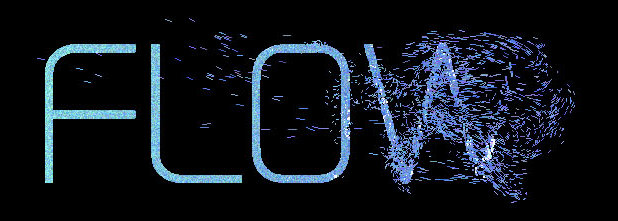Jakub Trčka | Back on trees
Cities as a living organism are constantly growing and looking for food in their horizontal perception of the world. Infractructure is Extending. The capacities of public transport distances are exceeded. IAD not only grows but exceeds the maximum. Production facilities are shifting behind the city and a post-postmodern model is emerging that drives the city‘s growth by planting and planting it with residential buildings. City centers are purchased as commercial premises and act as „temporary workplaces“. The links to the city then grow and the problem of communication is increasing. Let us imagine a multilevel replacement of these cities, which would slowly increase itself, while adapting it to our demands. The city as a living organism would turn into a real living organism in a unified form and try to make the most effective life of itself.
The primary organisms for such cities would be a local biotope that we would genetically modify to grow in an unconventional form. Hypothetically, if we let some plants (see experiment: Biota neotropica from Sao Paulo) grow in conditions with the maximum excess concentration of a certain gas, we would be able to accelerate their growth. This experiment was tested on a plant called Jatoba (Hymenaea Courbaril). At a time when carbon concentrations were reduced to standard levels, the growth of these plants evolved and proceeded at a much higher rate than usual. At the moment when we take carbon not only from the air, we store it in the space mass (the body of plants), so there is a problem how to use this structure. In this case, the use of this structure comes in the form of a new building surface. They react to the current problem of spreading the city into the open landscape and use this mass as a potential for the foundation of a new, growing platform functioning as an autonomous building area in which there are no restrictions on free-country.
Comparator / Physarum
Slime mold or slime mould ale organisms that can live freely as single cells, but can aggregate together to form multicellular reproductive structures.
In my work I use this organism as a comparator between the set rules, the simulation and the real proportion. I just let grew Physarum in a terrain model of real city in wet dish, placing the mold in a central position representing city center and oat flakes representing main mass of the structure. As Physarum avoids bright light, light was used to simulate mountains, water and other obstacles in the dish. The mold first densely filled the space with plasmodia, and then thinned the network to focus on efficiently connected branches. This way we can design connectivity between parts of the city with maximal effectivity.
Rules of program
The output of the work is creation of a complex program, based on a cellular automaton, which works with the defined rules that I collected durring the semester, and also I was looking for the appropriate argument, for those rules. I found this argument in orthographic maps taken between 30 years period on the territory of the former „state in the state“ where the Soviet army resided. This territory is Milovice. After its leave, the site began to deteriorate, and I tried to preserve the connection of the current city and biotop during the setting of rules.
Cellular automaton
A cellular automaton consists of a regular grid of cells, each in one of a finite number of states, such as on and off (in contrast to a coupled map lattice). The grid can be in any finite number of dimensions. For each cell, a set of cells called its neighborhood is defined relative to the specified cell. An initial state (time t = 0) is selected by assigning a state for each cell. A new generation is created (advancing t by 1), according to some fixed rule (generally, a mathematical function) that determines the new state of each cell in terms of the current state of the cell and the states of the cells in its neighborhood. Typically, the rule for updating the state of cells is the same for each cell and does not change over time, and is applied to the whole grid simultaneously, though exceptions are known, such as the stochastic cellular automaton and asynchronous cellular automaton.
Data preparation
In the first phase, it is necessary to create an underlying map in the „language“ that the cellular machine could operate on. It is the drawing of data from map realistic data, which must be in the first phase overwritten into a multidatal background that the program will compare, and on the basis of which it will generate individual surplus cells.
I‘ve created this data conversion program in the processing software. It simply inserts bitmap information (map) and it is then overwritten into a squared grid system with data 0 and 1.
|


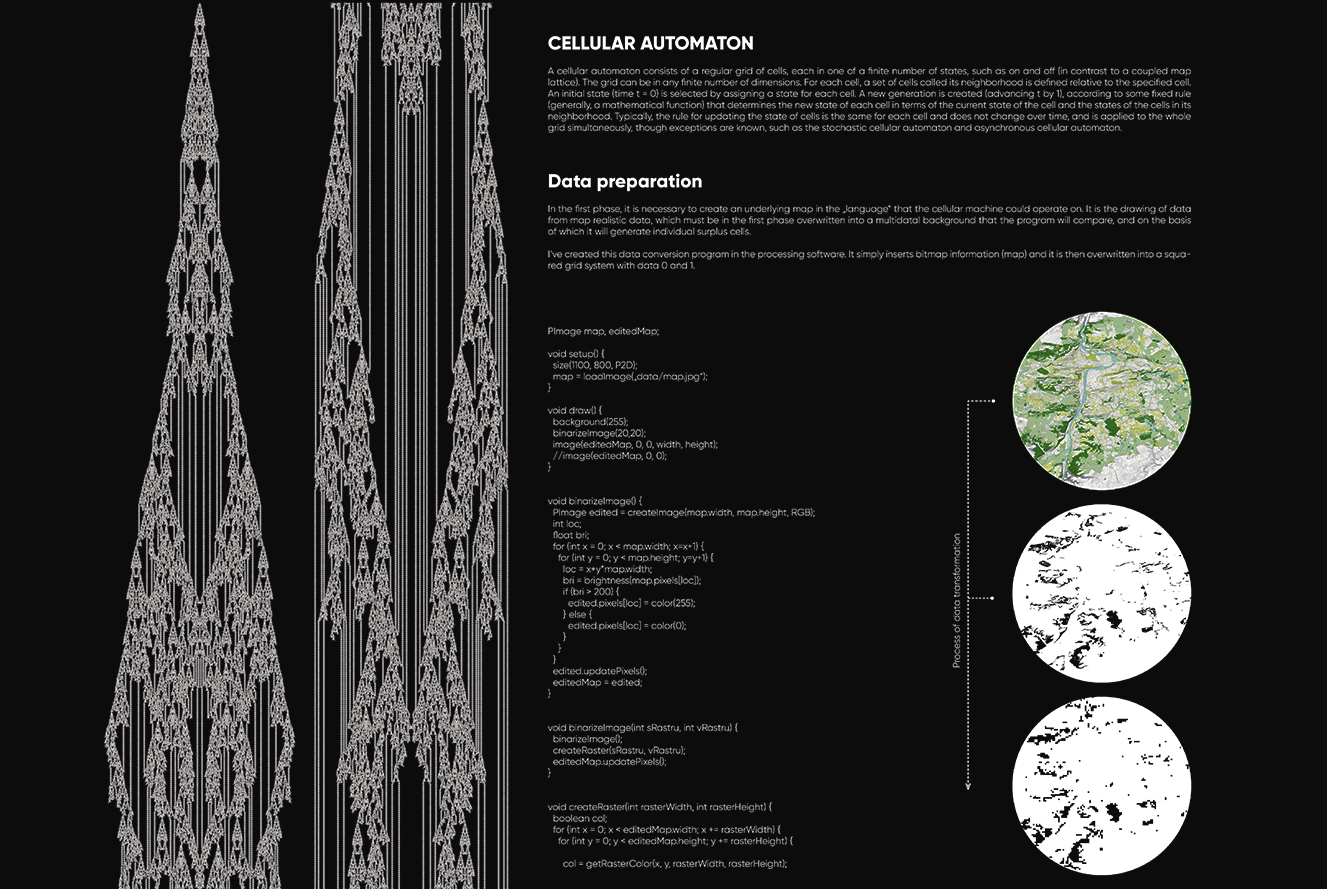
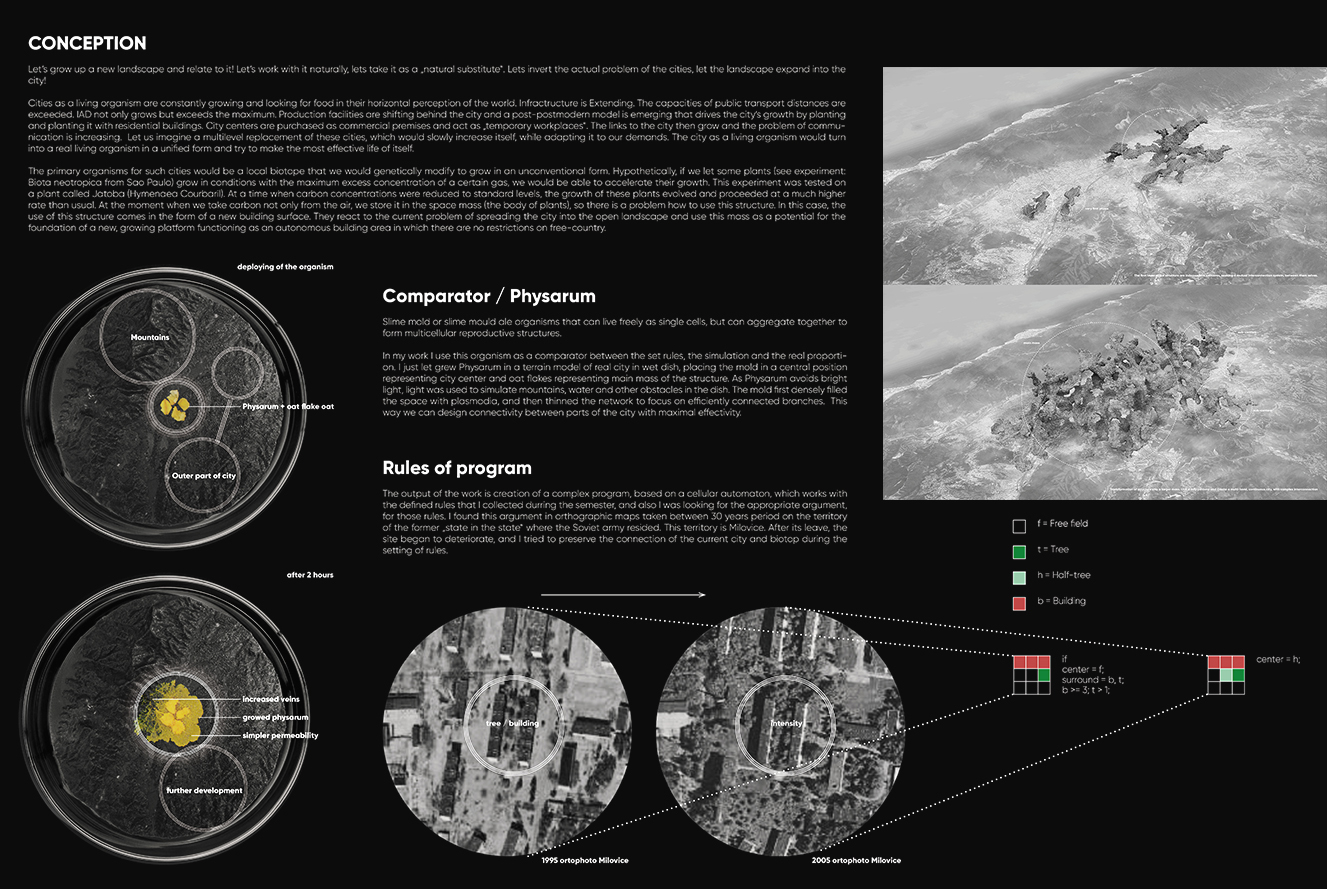
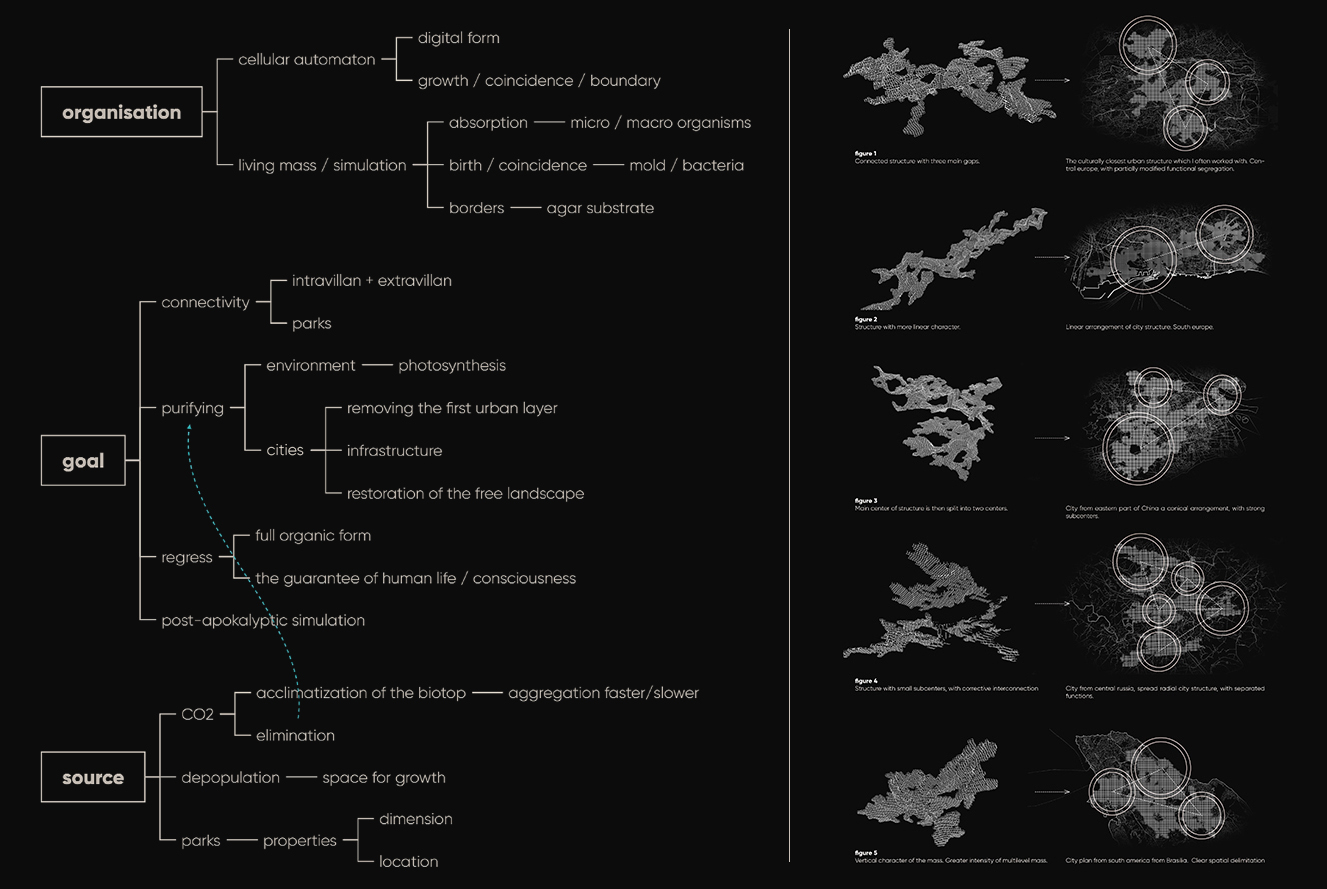
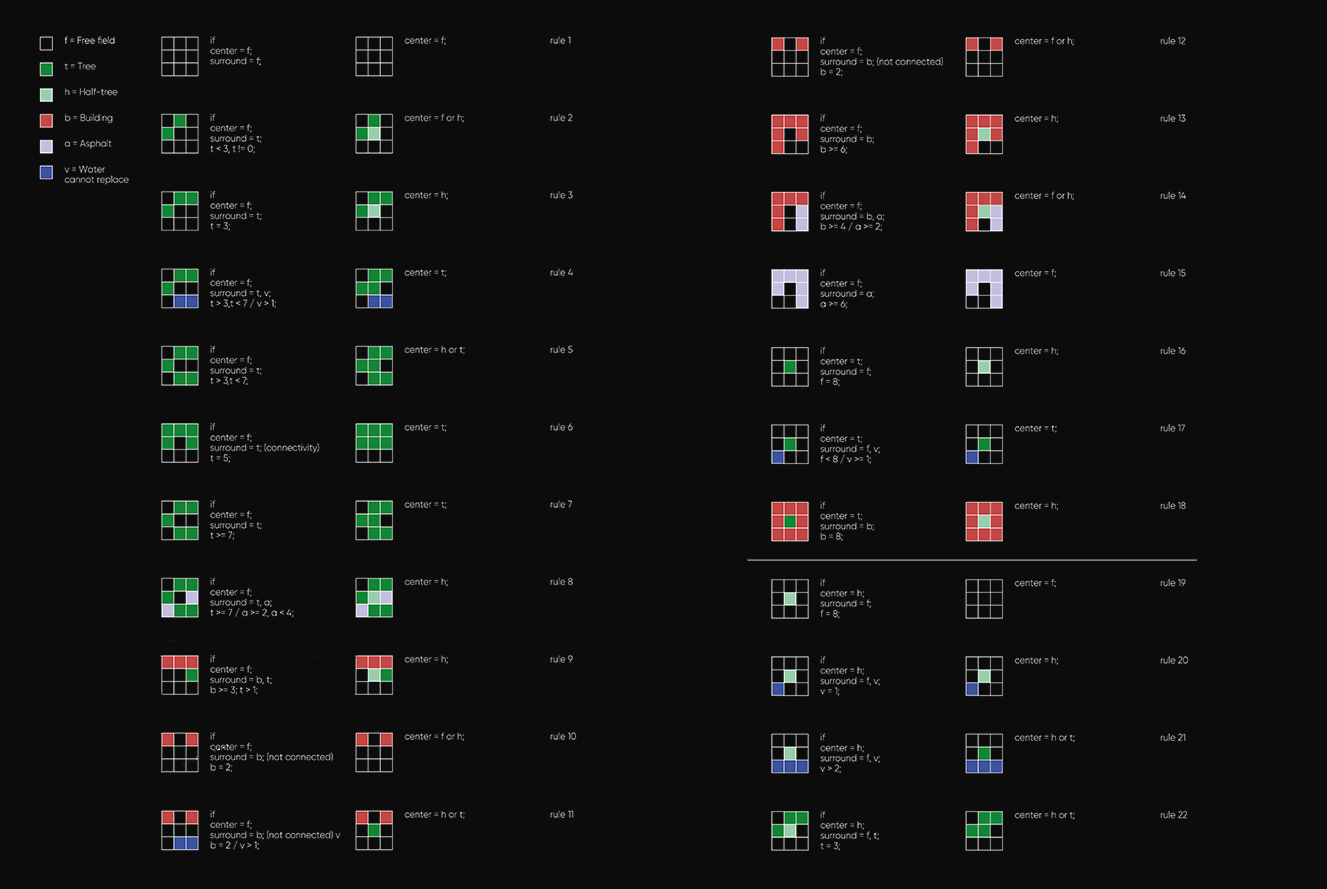
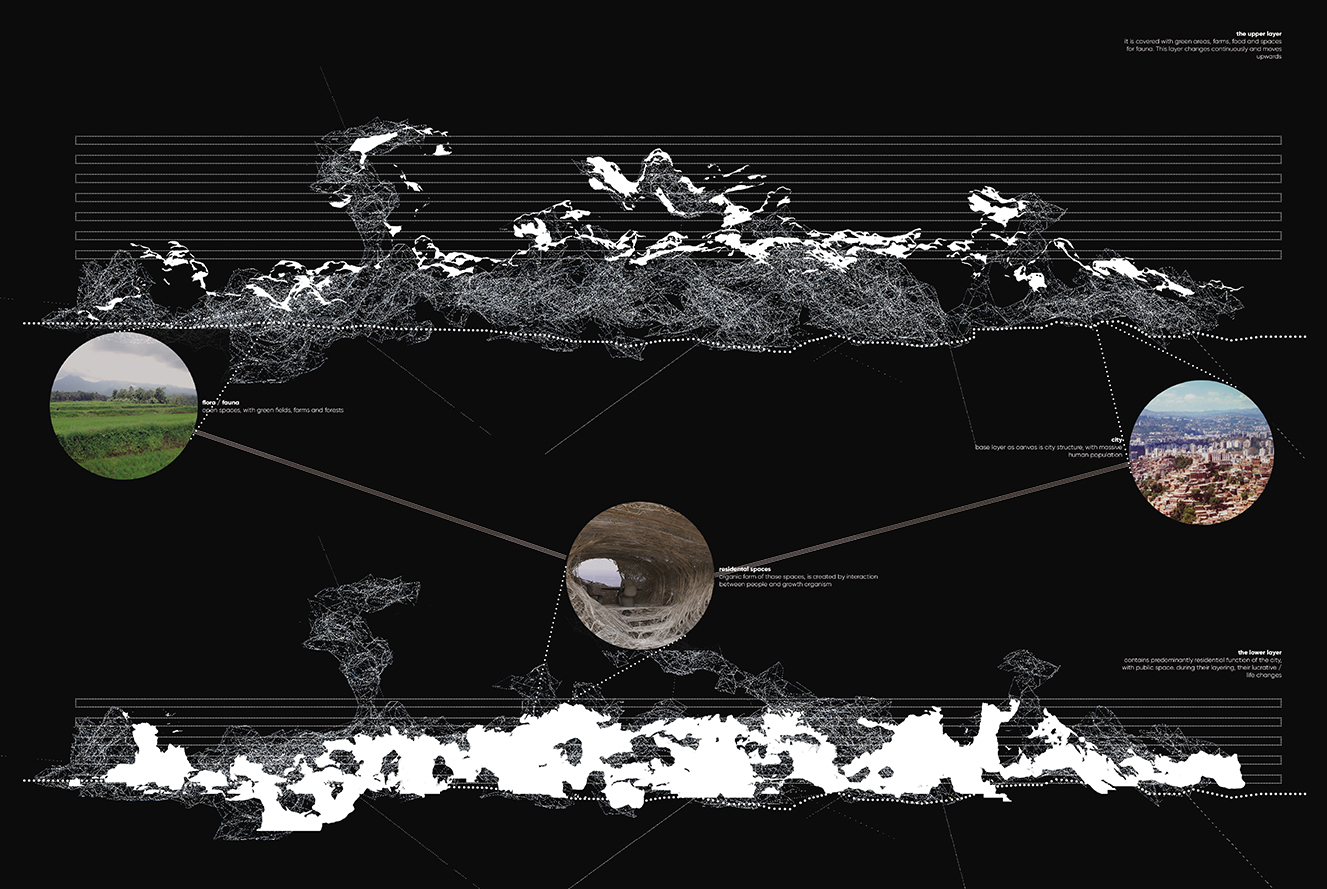
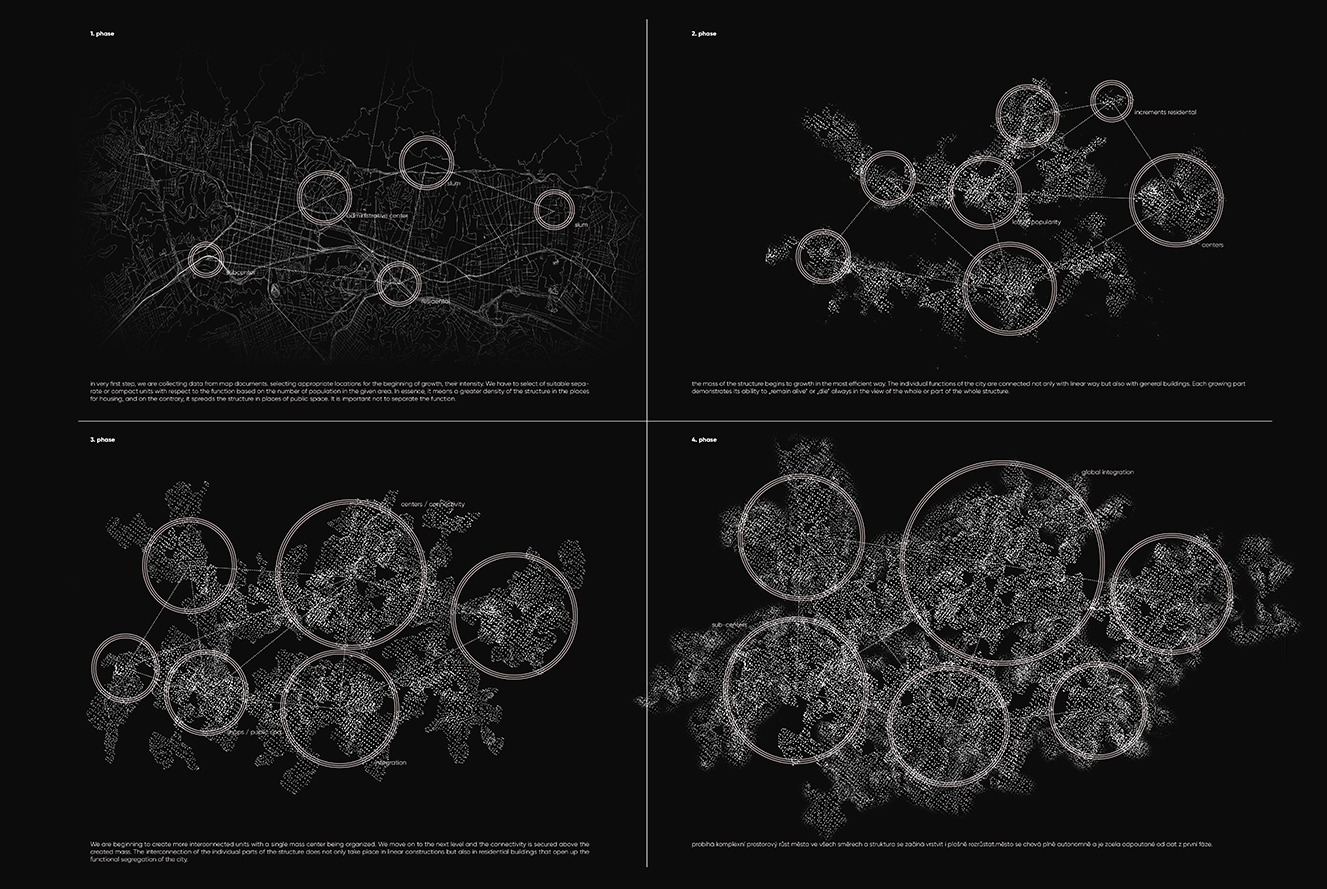
|
